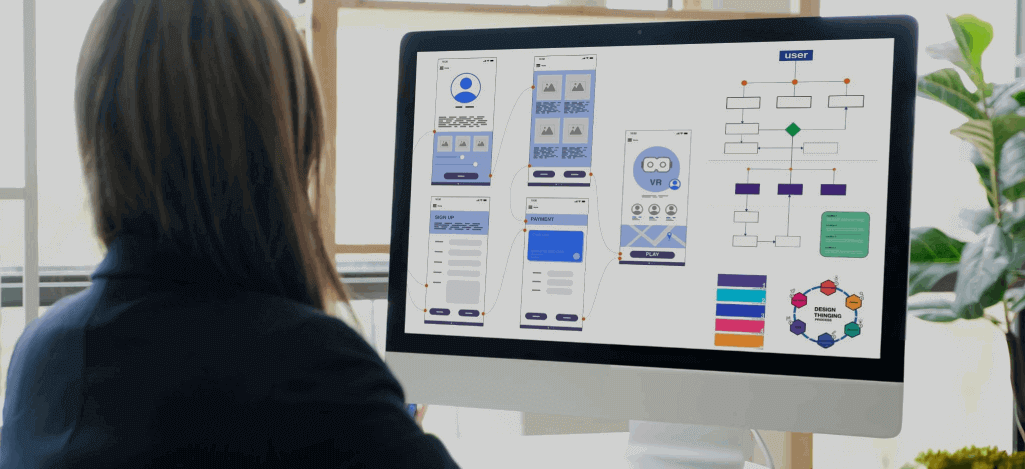When starting a new website, one of the first questions that comes to mind is: how long does it take to design a website? The truth is, there’s no one-size-fits-all answer. Every project is unique, and the time required depends on multiple factors like design complexity, revisions, and content availability.
On average, a professional website design can take 6 to 12 weeks from planning to launch. A simple business site may be ready within a month, while a more complex eCommerce or custom project can take several months.
This blog will guide you through the website design process, timeline, and all the factors that influence it in 2025.
Why Timeline Matters in Web Design
Your website is often the first impression of your business. A rushed design may lead to poor user experience, while an overly delayed project can slow down your growth. Understanding the website design timeline helps you plan better, set realistic goals, and avoid unnecessary delays.
Factors That Influence the Website Design Timeline
1. Complexity of the Website
Not all websites are the same.
- A small service-based website with 5–7 pages usually takes less time.
- A large website development and design project with custom features, booking systems, or multiple integrations may take months.
- An eCommerce website with payment gateways, product uploads, and inventory management is the most time-consuming.
In 2025, businesses also demand features like AI chatbots, personalized content, and interactive layouts. These innovations improve user experience but also extend the website design process.
2. Content Creation and Availability
Content is often one of the main reasons a website project gets delayed. Before any design work begins, you need to have your text, images, and videos ready. This includes things like your service descriptions, product details, company information, and visuals that represent your brand.
If your content is not ready and you plan to create it while the designer is working, it can add significant time to your project. Writing copy, creating graphics, taking product photos, or making videos all take extra days or weeks.
For projects starting from scratch, plan 2–4 weeks for content creation. Preparing content early helps designers add it directly to your website, which keeps the website design timeline shorter and smoother.
3. Feedback and Revisions
The speed of client feedback is critical. Timely approvals keep the project moving, while delays in response add weeks. Most custom web design agencies plan for 2–3 rounds of revisions, but more edits mean more time.
In 2025, many agencies use collaboration tools like Figma and Notion, making it easier for clients to review and comment quickly.
4. Designer’s Skills and Resources
The skill and experience of your designer or design team can make a big difference in how quickly your website is ready. A professional and experienced team knows how to handle challenges, avoid common mistakes, and work efficiently.
Freelancers or less experienced designers might cost less, but they often take longer because they manage all tasks themselves. They may need extra time to fix unexpected issues or learn new tools during the project.
By choosing the right web design services provider, you ensure your website is built smoothly, stays on schedule, and meets your expectations without unnecessary delays.
5. Integrations and Technical Requirements
Modern websites are more than just simple pages. Many businesses need extra features to run smoothly online. These include:
- CRM integrations to manage customer data efficiently
- Payment gateways for secure online transactions
- AI-driven chat support to assist visitors in real-time
- Email marketing tools to stay connected with customers
- Inventory or booking systems for eCommerce or service bookings
Adding these integrations takes extra time. Each feature needs proper setup, testing, and sometimes troubleshooting to make sure it works perfectly. That’s why a website development and design project often requires a few extra weeks beyond the basic design and layout.
6. Mobile Responsiveness and Browser Testing
In 2025, more than 70% of online traffic comes from mobile devices. If your website doesn’t work well on smartphones or tablets, many visitors may leave immediately.
Designers spend extra time making sure your website looks and works perfectly on all devices: desktops, tablets, and mobile phones. They also test your site on different browsers like Chrome, Safari, Firefox, and Edge to ensure consistency.
This responsive testing is not just about appearance—it affects how users interact with your site. A website that works smoothly on all devices improves user experience and keeps visitors engaged. It also plays a major role in SEO rankings, since search engines like Google prioritize mobile-friendly websites.
7. User Experience (UX) and User Interface (UI) Design
Modern users expect websites to be fast, easy, and interactive. That’s why UX and UI design play a huge role.
- UX ensures smooth navigation and clear information flow.
- UI focuses on layouts, typography, and visuals.
Agencies now use iterative testing—sharing prototypes with users, collecting feedback, and refining the design. This process adds time but ensures you get a professional website that actually works.
8. SEO and Optimisation During Design
In 2025, SEO is no longer an afterthought. A well-planned website design process includes SEO steps such as:
- Fast loading speed
- Optimized images
- Proper use of headings and keywords
- Mobile-first layouts
- Structured content
Integrating SEO from the start reduces the need for major fixes after launch.
9. Security and Compliance
Security is a must for every website today. Setting up SSL certificates, secure hosting, and data encryption are essential steps.
Depending on your audience, you may also need to follow compliance rules such as GDPR or local data protection laws. Agencies now design websites with built-in backups and regular maintenance options to ensure long-term safety.
Typical Website Design Timeline
A typical website project follows a structured timeline to ensure everything runs smoothly. It starts with planning and discovery, which usually takes 1–2 weeks, where the team understands your goals, target audience, and required features. At the same time, content gathering begins, lasting 2–4 weeks, where text, images, and videos are collected or created.
Next comes design mockups and prototypes for 2–3 weeks, where layouts, colors, and styles are drafted. After that, the development phase takes 3–6 weeks, during which pages are built, coded, and functionality is added. Once the website is developed, testing and revisions take 1–2 weeks, covering bug fixes, mobile responsiveness, and SEO checks. Finally, the website goes live with launch and post-launch support for about 1 week to ensure everything works correctly.
Overall, a small business website may take 6–8 weeks, a mid-level project 8–12 weeks, and a large or eCommerce site can require 12–16 weeks or more, depending on complexity and features.
How to Speed Up the Website Design Process
There are a few simple steps you can take to make your website design process faster and smoother. Start by preparing your content early, including text, images, and videos, so the designer can work without waiting. Always respond quickly to feedback requests, as delays in approvals can extend the timeline.
Be clear about your goals and requirements from the beginning, so the design team knows exactly what you need. Choosing a reliable custom web design agency with experience ensures that the project runs efficiently. Finally, try to avoid unnecessary design changes mid-project, as these can slow down progress and add extra time.
Final Thoughts
The time it takes to design a website in 2025 depends on complexity, content, and the efficiency of your design team. While a small site may be ready in weeks, a detailed eCommerce or custom project can take months.
What matters most is not just speed, but quality. A well-planned professional website design gives your business long-term success, improves user experience, and helps you grow online.







